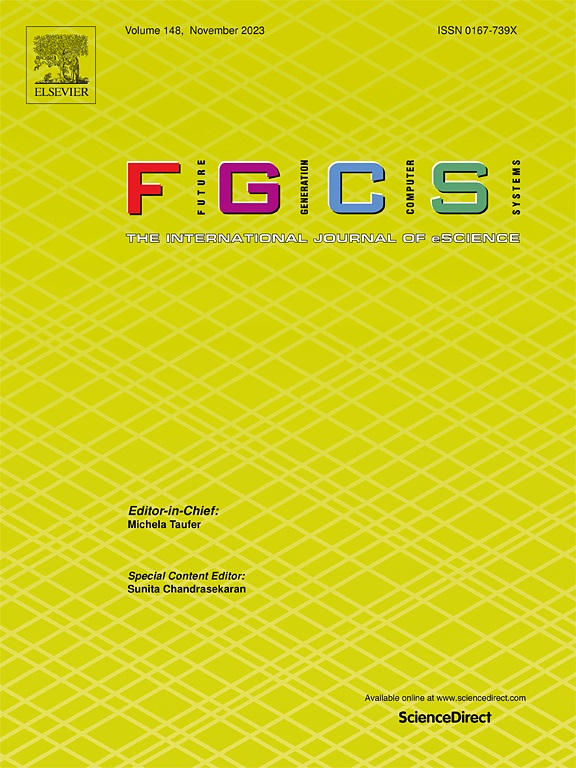Exploring RISC-V long vector capabilities: A case study in Earth Sciences
IF 6.2
2区 计算机科学
Q1 COMPUTER SCIENCE, THEORY & METHODS
Future Generation Computer Systems-The International Journal of Escience
Pub Date : 2025-06-06
DOI:10.1016/j.future.2025.107932
引用次数: 0
Abstract
This paper investigates the performance of Earth Sciences codes, specifically SeisSol and MiniFALL3D, on a RISC-V-based CPU featuring a long vector processing unit. The study focuses on optimizing these applications for improved computational efficiency while maintaining portability. For SeisSol, we explore batched GEMM implementations to enhance performance by leveraging instruction-level parallelism. MiniFALL3D’s optimization involves improving vectorization by modifying the source code, such as replacing functions with subroutines and flattening multidimensional arrays. The vectorization process is always left to the compiler to ensure code portability. The study is conducted using both a software emulator and a hardware prototype of the RISC-V vector architecture called EPAC. The performance of both applications is evaluated across different HPC platforms, including EPAC (based on RISC-V), MareNostrum 4 (powered by Sapphire Rapids CPUs), and the NEC SX-Aurora Tsubasa accelerator. We aim to provide insights into adapting Earth Sciences codes for modern high-performance computing systems while demonstrating the potential of RISC-V vector architectures. Ultimately, all modifications made to improve performance on the RISC-V long vector architecture are shown to be beneficial on other HPC architectures with different vector capabilities. This highlights the importance of maintaining code portability while relying on the compiler’s powerful auto-vectorization capabilities.
探索RISC-V长矢量能力:地球科学的案例研究
本文研究了地球科学代码的性能,特别是SeisSol和MiniFALL3D,在基于risc - v的CPU上具有长矢量处理单元。该研究的重点是优化这些应用程序,以提高计算效率,同时保持可移植性。对于SeisSol,我们探索了批处理GEMM实现,通过利用指令级并行性来提高性能。MiniFALL3D的优化包括通过修改源代码来改进向量化,例如用子例程替换函数和平面化多维数组。向量化过程总是留给编译器,以确保代码的可移植性。该研究使用RISC-V矢量架构EPAC的软件仿真器和硬件原型进行。这两个应用程序的性能在不同的HPC平台上进行了评估,包括EPAC(基于RISC-V), MareNostrum 4(由Sapphire Rapids cpu供电)和NEC SX-Aurora Tsubasa加速器。我们的目标是为现代高性能计算系统提供适应地球科学代码的见解,同时展示RISC-V矢量架构的潜力。最终,所有改进RISC-V长矢量架构性能的修改都被证明对其他具有不同矢量能力的HPC架构是有益的。这突出了在依赖编译器强大的自动向量化功能的同时保持代码可移植性的重要性。
本文章由计算机程序翻译,如有差异,请以英文原文为准。
求助全文
约1分钟内获得全文
求助全文
来源期刊
CiteScore
19.90
自引率
2.70%
发文量
376
审稿时长
10.6 months
期刊介绍:
Computing infrastructures and systems are constantly evolving, resulting in increasingly complex and collaborative scientific applications. To cope with these advancements, there is a growing need for collaborative tools that can effectively map, control, and execute these applications.
Furthermore, with the explosion of Big Data, there is a requirement for innovative methods and infrastructures to collect, analyze, and derive meaningful insights from the vast amount of data generated. This necessitates the integration of computational and storage capabilities, databases, sensors, and human collaboration.
Future Generation Computer Systems aims to pioneer advancements in distributed systems, collaborative environments, high-performance computing, and Big Data analytics. It strives to stay at the forefront of developments in grids, clouds, and the Internet of Things (IoT) to effectively address the challenges posed by these wide-area, fully distributed sensing and computing systems.

 求助内容:
求助内容: 应助结果提醒方式:
应助结果提醒方式:


